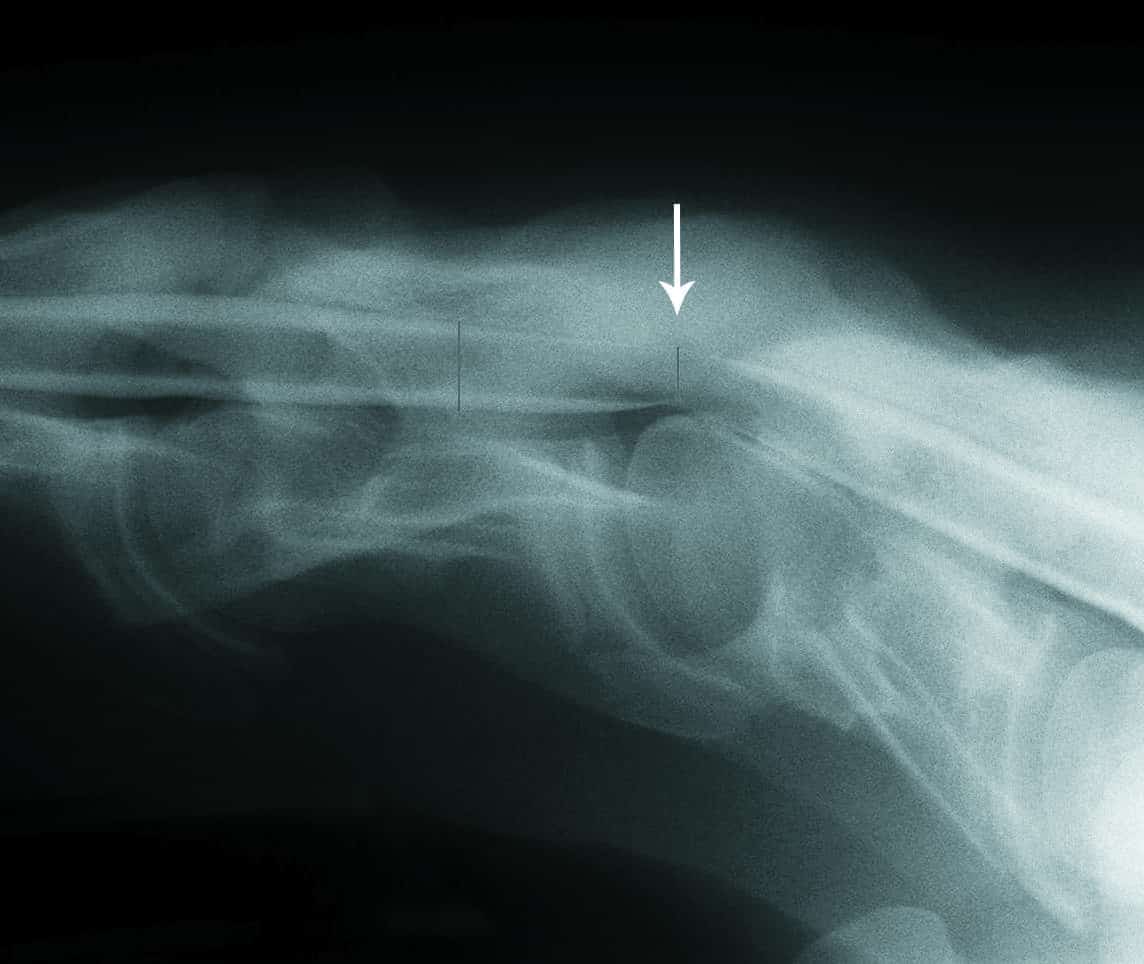Where are we Headed with Wobbler Syndrome?

Cervical stenotic myelopathy (CSM), commonly known as wobbler syndrome, is a neurologic disease characterized by malformations of the neck vertebrae. This leads to narrowing of the cervical spinal canal and subsequent compression of the spinal cord. The cord compression manifests clinically as neurologic deficits, typically with the hind limbs being more severely affected than the forelimbs. Depending on the severity of the horse’s deficits, euthanasia is often elected for humane and horse and human safety reasons.
Equine CSM is considered to be a multifactorial disease with high planes of nutrition, increased growth rates, alterations in zinc and copper concentrations, and genetic determinants implicated in disease development. Although all these factors are known or suspected to play a role, the exact mechanistic details that lead to clinical disease are still unclear.
Gender, breed, and age factors are well represented in the current knowledge base of this devastating disease. Males are more often affected than females. Breeds such as Thoroughbreds, American Saddlebreds, Warmbloods, and Tennessee Walking Horses are overrepresented in the identification of the syndrome. Various studies have identified the mean age of CSM horses as less than 2 years leading to the categorization of CSM as a developmental bone disease.
Over the years, assessment methods and analytical approaches for accurate clinical diagnosis of CSM have been developed. All clinical workups begin with a thorough neurologic examination looking primarily for signs of ataxia. The next step is visualization of the neck using radiography. Standard ratios based on skeletal anatomical measurements have been defined at each intervertebral site to identify presumptive areas of spinal canal narrowing. For visualization of actual spinal cord compression, myelograms can be performed.
Once a diagnosis of CSM is made, several management and treatment options are available. More conservative approaches center on dietary modification and anti-inflammatories to slow growth rates, reduce swelling of non-skeletal tissues, and possibly allow vertebral bone remodeling to reduce cord compression. More aggressive approaches involve surgical intervention to alleviate cord compression via cervical vertebral fusion.
Despite all that is known, important questions still remain about wobbler syndrome. Recent research at the Gluck Equine Research Center has focused on CSM. Developments in diagnostic imaging modalities, such as MRI and computerized tomography (CT), enable the characterization of lesions along the entire neck. High-resolution images from multiple angles and the ability to visualize the cervical vertebrae, spinal cord, and associated soft tissues together provide powerful data to study and understand CSM pathology. The combined resources of imaging modalities, clinical resources, and thorough necropsy examinations are providing new insights for CSM research. Although currently used in the research settings, changes in these imaging units to accommodate the size of the horse will allow for the possible use of CT or MRI for clinical diagnosis in the future.
The role of inherited genetic determinants is a long-standing question. Due to rapidly developing genomic technologies, studies are now being conducted to investigate the equine genome to identify specific genes that may contribute to CSM susceptibility. This is an exciting area of research that could have an important impact on breeding decisions and management of potentially susceptible horses.
CONTACT—Jennifer Janes, DVM, PhD—jennifer.janes@uky.edu—University of Kentucky, Lexington, Kentucky
This is an excerpt from Equine Disease Quarterly, funded by underwriters at Lloyd’s, London, brokers, and their Kentucky agents.
Written by:
Equine Disease Quarterly
Related Articles
Stay on top of the most recent Horse Health news with















